Text
Breathe Easy (and Green!): Get Your Laundry Groove On with GoGoNano Laundry Sheets
This article is originally published on GoGoNano’s official blog.
Remember laundry day? Picture this: overflowing laundry baskets, that messy measuring cup dripping detergent everywhere, and that weird chemical smell clinging to your clothes. Ugh! But what if your next laundry experience could be effortless, gentle on your skin and the planet, and pack a punch on even your stinkiest gym clothes and delicates? Buckle up, laundry warriors, because GoGoNano laundry sheets are here to revolutionize your routine!
Ditch the Mess, Embrace Sustainability (and Your Inner Zen)

Powerful Cleaning Without Compromise
Don’t underestimate the cleaning power hidden within these concentrated laundry sheets. Packed with an ultra-concentrated plant-based formula, GoGoNano tackles dirt, grime, and even tough stains like grass, mud, wine or your post-workout funk with ease. Whether you’re refreshing everyday clothes, battling lingering gym odors, or giving your delicates a gentle clean, they deliver optimal cleaning performance, even in cold water cycles (as low as 15°C). This powerful cleaning, combined with their eco-friendly nature, makes them perfect for those seeking natural laundry detergent alternatives that don’t compromise on cleaning for any fabric type. So, toss those harsh chemicals — your clothes and the planet will thank you!
Gentle on Skin, Kind to Your Most Precious Threads
Traditional detergents often contain harsh chemicals that can irritate sensitive skin and damage delicate fabrics. Not GoGoNano laundry sheets! Formulated with hypoallergenic, biodegradable ingredients, they’re gentle on your skin and clothes, while minimizing environmental impact. This makes them ideal for individuals with sensitive skin concerns or those seeking gentle laundry detergent for delicates, like wool or silk. Plus, their versatility makes them suitable for all washing machine types and handwashing, offering outstanding cleaning power for everything from your everyday laundry to your most treasured pieces. Imagine your favorite silk scarf coming out soft and vibrant, not stiff and faded — that’s the GoGoNano magic!
Beyond Convenience and Sustainability: Tailored Solutions for Every Laundry Load
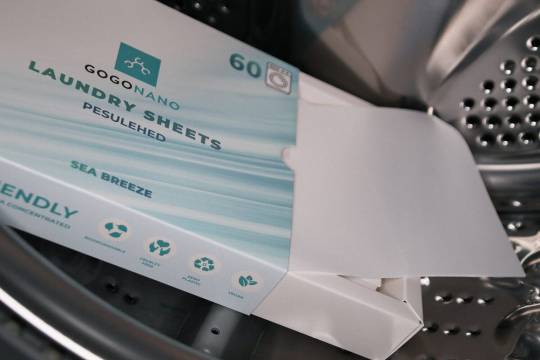
Travel-Friendly and Cost-Effective (Because Who Doesn’t Love Saving Money?)
Compact and lightweight, these laundry sheets are perfect for travelers, campers, or anyone with limited storage space. They’re the ideal travel laundry detergent option, eliminating the need for bulky liquids or messy powders. And while the upfront cost might seem higher, think long-term: pre-measured sheets prevent overusing detergent, leading to long-term cost savings. The highly concentrated formula translates to fewer sheets needed per load, making them more affordable than most capsules or eco-friendly gels in the long run. So, save your money for that epic vacation — GoGoNano has your laundry covered!
Choosing the Right Laundry Sheets
With so many options out there, choosing the right laundry sheets can feel overwhelming. But don’t worry, laundry guru, we’ve got your back! Consider these factors:
Ingredients: Our natural laundry detergent sheets are formulated with plant-based ingredients that are readily biodegradable, minimizing their environmental impact. Free from harsh chemicals, they’re ideal for sensitive skin and gentle on your precious delicates.
Scent: Our current offering features a light and refreshing Sea Breeze scent. Future additions will cater to individual preferences, including fragrance-free options.
Fabric Compatibility: GoGoNano laundry strips are suitable for all fabric types, including wool and sportswear. However, future lines may cater to specific delicates with unique needs.
Water Temperature: Our sheets work effectively in both hot and cold water cycles (as low as 15°C).
Embrace the Future of Laundry

Finding the Perfect Laundry Solution
Whether you’re drawn to the versatility of traditional detergents or the convenience and eco-friendliness of laundry sheets, the most important factor is choosing a solution that aligns with your laundry needs and preferences.
Remember, there’s no single “best” answer — it’s all about finding what works best for you!
#sustainability#laundry sheets#laundry strips#laundry detergent sheet#laundry detergent#laundry day#ecofriendly#nanotechnology#green chemistry#natural cleaning product#laundry#washing#sheets#hygiene
1 note
·
View note
Text
Top 6 Myths About Microfiber Cloths Busted
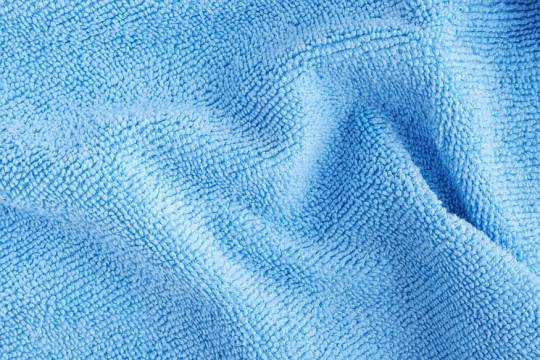
This article is originally published on GoGoNano’s official blog.
Microfiber cloths have conquered the cleaning world, lauded for their versatility, efficiency, and eco-friendliness. Yet, amidst their reign, misconceptions and myths persist, hindering their true potential. Let’s dispel the most common myths and unlock the real cleaning magic of these microfiber marvels!
Myth 1: One Size (and Density) Fits All
Nope! Just like snowflakes, microfiber cloths differ in density and blend. Aim for high-density cloths (80/20 blend). The 80% polyester offers durability, while the 20% polyamide boosts static cling for superior dust-trapping. Avoid low-density cloths that scratch delicate surfaces like glass or electronics.
Myth 2: Water, Their Holy Grail (Sometimes)
While they excel at capturing dust and light grime with just water, some situations demand reinforcements. Fact: Choose ph-neutral cleaners for greasy messes or disinfecting. Water alone might not tackle bacteria effectively. Use appropriate cleaners to ensure a holistic clean. Consider gentle dish soap for greasy surfaces, vinegar solutions for disinfecting, or glass cleaner for streak-free windows.
While water excels for dust and light grime, explore advanced cleaning techniques and diverse applications in our comprehensive guide: The Ultimate Cleaning Guide: The Benefits of Microfiber Cloths.
Myth 3: Replacing the Cleaning Arsenal (Not Quite)
Microfiber cloths are workhorses, but even they have limitations. For heavy-duty scrubbing, tackling grime buildup in ovens or grills, or disinfecting specific surfaces like toilets, you might need sponges, specialized cleaners, or disinfectants. Think of microfiber cloths as your eco-friendly first line of defense, with other tools available for backup, depending on the cleaning task.
Myth 4: Washing? Never Heard of Her!
Imagine a cloth teeming with trapped dirt and bacteria. Shudder-worthy, right? Wash your microfiber cloths regularly! Follow the manufacturer’s instructions, typically after every few uses. Use warm water (around 140°F) and gentle detergent for both cleaning and disinfection. Remember, clean cloths clean effectively! Avoid fabric softener as it weakens the static cling and reduces their cleaning power.
Want to learn more about the proper way to wash microfiber cloths and extend their lifespan? Check out our Essential Guide to Washing Microfiber Cloths & Towels.
Myth 5: Fabric Softener Makes Microfiber Cloths Softer and Better (Wrong!)
This is a major cleaning no-no! Fabric softener coats the fibers, weakening their static cling and hindering their dust-trapping power. Fact: Stick to detergent only when washing microfiber cloths. Skip the fabric softener and allow them to air dry completely. Heat drying weakens the fibers, reducing their lifespan. Consider hanging them on drying racks or lines for optimal air circulation.
Myth 6: Eternal Life for Your Cloths (Wishful Thinking)
Like any tool, microfiber cloths have a lifespan. With proper care, they can last several months to a year. Watch for signs of wear like fraying, reduced cleaning power, and difficulty absorbing water. Replacing worn-out cloths ensures maximum effectiveness and prevents spreading bacteria. Don’t be tempted to hold onto damaged cloths — invest in fresh ones for optimal cleaning results.
Bonus Myth: A Sea of Specialized Cloths for Every Surface

Master Microfiber, Clean Smarter, Live Greener
Unleash the cleaning power of microfiber and discover how it can transform your home into a sparkling haven of sustainability and wellness.
Organization & Hygiene in Harmony
Ditch confusion and cross-contamination with a colorful solution! Assign different colored cloths to specific areas like bathroom (blue), kitchen (green), and general dusting (yellow). It’s organized, hygienic, and adds a fun splash to your routine!
Ditch Paper, Embrace Crystal Clarity
Say goodbye to wasteful paper towels! Achieve sparkling windows with just two eco-friendly heroes: microfiber cloths and vinegar. The static cling traps dust and grime, while the vinegar cuts through streaks. Sparkling windows, lighter footprint? We love it!
Tackle Tough Messes, Naturally
Forget harsh chemicals and embrace the dream cleaning team: microfiber cloths and steam cleaners! This dynamic duo conquers greasy stovetops, grimy oven doors, and even shower grime. Steam loosens tough messes, while microfiber effortlessly traps and removes them, leaving surfaces clean without chemicals.
Master Specific Challenges:
Appliance Expertise: Learn dedicated methods and solutions for each appliance.
Pet Hair Removal: Banish pesky fur with damp or dry cloths, paired with gloves or a lint roller for maximum results.
Delicate Surface Care: Clean with confidence using dry or damp cloths and gentle solutions. Always test first!
Microfiber is more than just clean surfaces, it’s a green choice
Reduced Chemical Reliance: Breathe easy and ditch harsh chemicals that harm your health and the environment. Microfiber tackles dirt effectively with just water or mild solutions.
Reusable & Durable: Say goodbye to wasteful paper towels! Microfiber cloths are reusable for months, significantly reducing landfill waste and minimizing your environmental footprint.
Water Conservation: Every drop counts! Microfiber requires less water for cleaning and washing, conserving this precious resource.
To learn more about our commitment to sustainability and OEKO-TEX certification, head over to our informative guide OEKO-TEX: Your Guide to Safe and Sustainable Textiles. This certification ensures our microfiber cloths meet strict safety and environmental standards, providing peace of mind for you and the planet.
#cleaningmyths#sustainability#ecofriendly#microfiber cloth#microfiber#cleaning tips#ecofriendly living
0 notes
Text
Properly Wash Microfiber Cloths & Towels: An Essential How-To Guide
Microfiber cloths & towels have revolutionized cleaning practices worldwide. Comprising fine synthetic fibers, these cloths are celebrated for their ability to attract and hold dust, dirt, and liquid. Unlike traditional cleaning cloths, microfiber traps particles, ensuring a cleaner, more efficient wipe-down. Given their widespread use in both domestic and professional settings, understanding the proper care and maintenance of microfiber cloths is essential. This article delves into the best practices for washing microfiber cloths and towels, aiming to extend their lifespan and maintain their remarkable cleaning capabilities.
Importance of Proper Washing Techniques
The longevity and effectiveness of microfiber cloths heavily rely on how they are washed and maintained. Incorrect washing techniques can damage the fibers, thereby reducing their efficiency and lifespan. Proper cleaning not only preserves the microfibers but also ensures that they continue to perform at their best. From choosing the right washing method to selecting suitable detergents, this guide offers detailed instructions to ensure that your microfiber cloths remain a dependable cleaning tool.
Preparing Microfiber Cloths for Washing
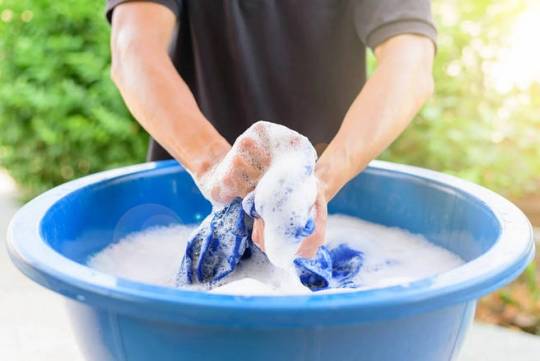
Hand Washing vs. Machine Washing
Deciding between hand washing and machine washing depends on the condition of the cloths. Hand washing is suitable for lightly soiled cloths and can be gentler on the fibers. In contrast, machine washing is more convenient for heavily soiled or stained cloths, offering a deeper clean.
Hand Washing Microfiber Cloths and Towels
Hand washing microfiber cloths is a simple yet effective way to clean them. Follow these steps:
Begin by shaking the cloth to release any loose dirt.
Fill a basin with cool or warm water. Hot water can damage the fibers, so avoid using it.
Submerge the microfiber cloths in the water. Gently agitate them by hand, focusing on heavily stained areas.
Let the cloths soak for about 15–20 minutes.
After soaking, rinse the cloths thoroughly under running water. Wring out excess water gently, being careful not to stretch the fibers.
Hand washing is ideal for maintaining the integrity of the microfibers, ensuring they continue to effectively trap dirt and debris.
Machine Washing Microfiber Cloths
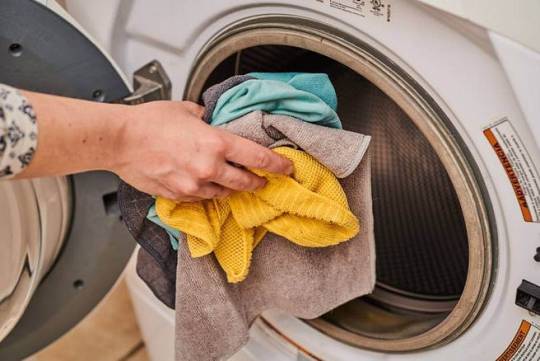
Machine washing microfiber cloths requires a gentle approach to preserve their cleaning efficacy:
Before washing, shake the cloths to remove excess dirt.
Use cold or warm water. Hot water can damage the microfibers.
Opt for a gentle, fragrance-free detergent. Avoid using fabric softeners or additives that can coat and clog the fibers.
If the cloths have a persistent odor, adding a tablespoon of white vinegar can help neutralize it.
Allow the machine to agitate the cloths for half of the cycle, then pause for a 15–20 minute soak.
Resume and complete the wash cycle.
These steps ensure that the microfibers are cleaned thoroughly without causing damage.
Temperature Settings and Detergent Choices
The ideal washing temperature for microfiber cloths is below 82 degrees Celsius. A mild, low-suds detergent is recommended. Fabric softeners and bleach should be avoided as they can degrade the microfiber’s cleaning ability.
Wash New Microfiber Towels First
It’s essential to wash new microfiber towels before their first use. Manufacturers often apply a silicone coating during production, which can impede the cloth’s ability to absorb liquids effectively. Washing new towels removes this coating, thus unlocking the full potential of the microfibers.
For the inaugural wash, it’s recommended to use a combination of white vinegar and laundry detergent. Add half a cup of white vinegar to the wash water, along with about half the usual amount of laundry detergent. The vinegar plays a crucial role in this process; it helps set the colors, ensuring they remain vibrant and fade less over time. Additionally, vinegar aids in removing any residual substances left from the manufacturing process, such as lint from the weaving.
This initial wash primes the towels for optimal performance. The removal of the silicone coating not only enhances the towels’ absorbency but also ensures that they are ready to tackle cleaning tasks more effectively from their very first use.
How Often to Wash Microfiber Towels
Microfiber cloths and towels should be washed frequently to maintain their cleanliness and effectiveness. If you’re using these towels for light tasks like dusting, they can be used several times before needing a wash. However, for heavier cleaning, such as in kitchens or bathrooms, it’s best to wash them after each use to remove dirt and bacteria.
For personal care or gym use, washing after every use is recommended to maintain hygiene. Consistent washing prevents the buildup of bacteria and odors. Remember to use a gentle detergent and wash according to the guidelines provided earlier in this article. Regular washing not only ensures cleanliness but also maintains the high absorbency and cleaning efficiency of your microfiber towels.
Drying Microfiber Cloths: Air-Drying and Machine Drying
Proper drying of microfiber cloths is as crucial as washing them correctly. There are two effective methods: air-drying and machine drying.
Air-Drying:
After washing, shake out the cloths to remove any excess water.
Hang the cloths in direct sunlight if possible. Sunlight has natural disinfecting properties.
If drying indoors, choose an area with good air circulation.
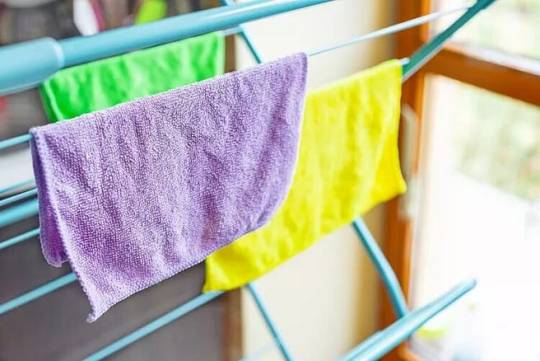
Machine Drying:
Dry microfiber towels separately from other items.
Before and after drying microfiber cloths, clean the dryer’s lint trap to avoid lint transfer.
Do not use dryer sheets or balls, as they can leave a residue on the microfibers.
Use a low heat or air-dry cycle to prevent damaging the fibers.
Both methods ensure that the cloths dry efficiently without compromising their structure or cleaning ability.
Maintenance Tips for Longevity of Microfiber Cloths
Proper maintenance of microfiber cloths is crucial for maximizing their efficiency and lifespan. Here are essential tips:
After each use, shake the cloth to remove loose debris and rinse it in warm water. This practice helps to dislodge dirt and maintain the cloth’s cleaning effectiveness.
Microfiber is most effective when used with water. If you must use cleaning solutions, opt for mild, non-abrasive options. Harsh chemicals can damage the microfibers and reduce their cleaning ability.
Store microfiber cloths separately from other cleaning materials to avoid cross-contamination and the transfer of lint or debris.
Clean your microfiber cloths regularly to prevent the buildup of dirt and bacteria. Regular cleaning also ensures that the cloths maintain their absorbency and cleaning efficiency.
Do not iron or expose microfiber cloths to high heat sources. Excessive heat can damage the fibers, leading to a loss of effectiveness.
Regularly inspect your microfiber cloths for signs of wear and tear. Replace them if they become overly worn or lose their effectiveness.
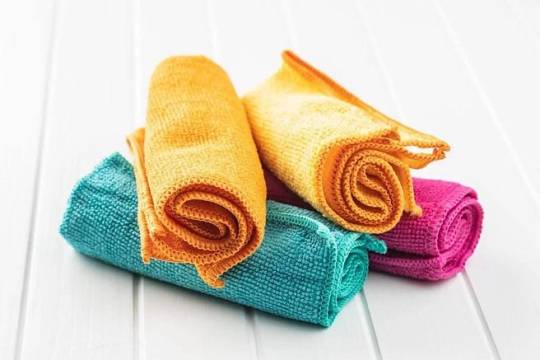
Common Mistakes to Avoid When Washing Microfiber Cloths
Ensuring the durability and functionality of microfiber cloths involves avoiding common washing mistakes:
Washing microfiber cloths with cotton or other lint-producing fabrics can lead to lint accumulation on the microfiber surface, reducing its cleaning capability.
Don’t overload the washing machine. Microfiber cloths expand and absorb more water than cotton, requiring more room to agitate and release trapped dirt.
Avoid using hot water as it can damage the microfibers. Stick to cold or warm water for optimal cleaning without causing harm to the cloths.
Steer clear of harsh detergents, fabric softeners, and bleach. These can coat and clog the microfibers, significantly diminishing their effectiveness.
Avoid high heat in the dryer. High temperatures can melt or damage the fibers. Opt for air-drying or low heat settings.
Always shake out the cloths before washing to remove loose debris. This prevents the redistribution of dirt during the wash cycle.
TIPS & TRICKS FOR WASHING MICROFIBER TOWELS
Knowing how to properly wash microfiber towels will help you keep them in good shape for effective cleaning.
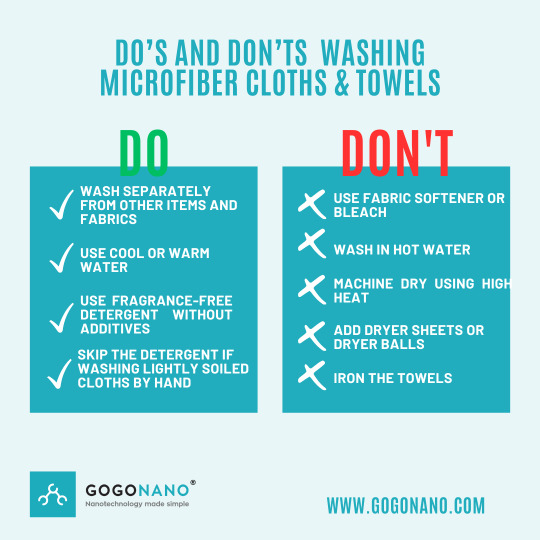
#microfiber cloths#microfiber towel#washing microfiber cloths#washing guide#cleaning guide#tips and tricks
0 notes
Text
OEKO-TEX: Your Guide to Safe and Sustainable Textiles

In today’s environmentally conscious world, consumers are increasingly seeking products that align with their values of safety and sustainability. Textile certifications have emerged as valuable tools to guide informed purchasing decisions, with OEKO-TEX standing out as a leading organization dedicated to promoting safe and environmentally responsible practices throughout the textile industry.
OEKO-TEX: A Pioneer in Textile Certification
Founded in 1992, OEKO-TEX has established itself as a beacon of innovation and integrity, setting the benchmark for textile safety and sustainability across the globe. Its comprehensive certification system, which encompasses Standard 100, STeP, and MADE IN GREEN, guides consumers towards safer choices and encourages manufacturers to adopt sustainable practices.
Standard 100: Ensuring Safety for Every Touch
At the heart of OEKO-TEX’s mission lies Standard 100, the flagship certification that meticulously assesses the presence of harmful substances in textiles. This extensive testing process, carried out by independent OEKO-TEX institutes, guarantees that products ranging from clothing and bedding to home textiles are completely free from a wide range of potentially hazardous chemicals, including heavy metals, formaldehyde, pesticides, and other substances that could pose significant health risks. This means that you can have peace of mind knowing that our microfiber cloths are safe for your skin and overall health.
Benefits of Standard 100 Certification
Protection from harmful substances: Standard 100 ensures that textiles are free from a comprehensive list of harmful substances, including azo dyes, formaldehyde, heavy metals, and pesticides.
Peace of mind for consumers: Consumers can confidently choose textiles that are safe for their skin and overall well-being.
Brand reputation boost: Manufacturers that achieve Standard 100 certification can enhance their brand reputation and attract conscientious consumers.

STeP: A Paradigm Shift towards Sustainable Practices
While ensuring chemical safety is paramount, OEKO-TEX’s vision extends beyond product testing. STeP, the organization’s dedicated sustainability certification, takes a holistic approach by evaluating and certifying manufacturing facilities based on their environmental performance, social responsibility, and quality management practices.
Benefits of STeP Certification
Reduced environmental impact: STeP encourages manufacturers to adopt cleaner, more sustainable production methods, minimizing their environmental footprint.
Improved working conditions: STeP promotes ethical labor practices and ensures that workers are treated with respect and dignity throughout the production process.
Enhanced transparency: STeP provides transparency into the production process, allowing consumers to make informed choices about the products they purchase.
Responsible sourcing: STeP encourages manufacturers to source their raw materials from sustainable and ethical sources.
MADE IN GREEN: The Ultimate Symbol of Textile Excellence
Combining the stringent standards of both Standard 100 and STeP, MADE IN GREEN by OEKO-TEX represents the pinnacle of textile certification. This prestigious label adorns products that not only meet the highest safety standards but also boast a commitment to sustainable manufacturing practices. By embracing MADE IN GREEN, manufacturers reaffirm their dedication to environmental responsibility and ethical production, earning the trust of conscious consumers worldwide.
Benefits of MADE IN GREEN Certification
The ultimate assurance: MADE IN GREEN provides the highest level of assurance that products are both safe for human health and produced in a sustainable manner.
Brand credibility: MADE IN GREEN certification enhances brand credibility and attracts environmentally conscious consumers.
Reduced risk: MADE IN GREEN helps to reduce the risk of legal and reputational damage associated with the use of harmful chemicals or unsustainable production practices.
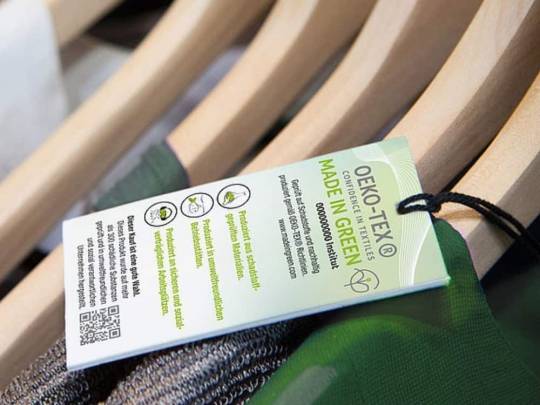
OEKO-TEX’s Commitment to Circular Economy
Beyond its certification programs, OEKO-TEX actively promotes circular economy principles, encouraging the textile industry to minimize waste, conserve resources, and extend the lifespan of textiles. The organization provides guidance and support to manufacturers on adopting sustainable practices such as product design for durability, efficient use of resources, and recycling and repurposing of textile waste.
The Impact of OEKO-TEX Certifications
The impact of OEKO-TEX certifications is evident across the global textile landscape. Leading brands and manufacturers worldwide have adopted OEKO-TEX standards, influencing production practices and consumer choices. The organization’s unwavering commitment to innovation and continuous improvement ensures that its certifications remain at the forefront of textile safety and sustainability, setting the benchmark for industry leaders and inspiring a wave of positive change.
Real-life Examples of OEKO-TEX’s Impact
OEKO-TEX certifications have made a significant impact on the textile industry, and there are numerous real-life examples that demonstrate this impact. Here are a few notable examples:
IKEA: IKEA, one of the world’s largest furniture retailers, has fully embraced OEKO-TEX Standard 100 certification for all of its textiles. This decision has not only ensured the safety of millions of IKEA customers but has also helped to raise awareness of the importance of textile safety among consumers worldwide.
Patagonia: Patagonia, a leading outdoor apparel brand, has been a strong advocate for OEKO-TEX certifications. The company has pledged to only use OEKO-TEX certified fabrics in its products, and it has also incorporated OEKO-TEX’s sustainable production principles into its own manufacturing practices.
H&M: H&M, a global fashion retailer, has made significant progress in adopting OEKO-TEX certifications. The company has certified over 80% of its textiles with OEKO-TEX Standard 100, and it has also committed to using OEKO-TEX STeP certified materials in its future collections.
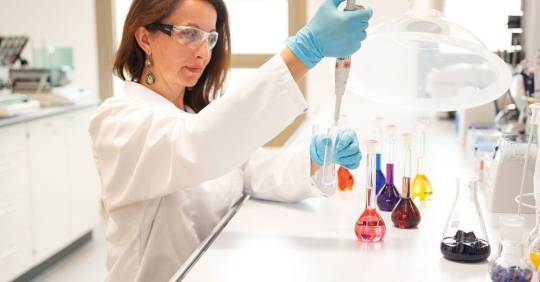
A Future of Safe and Sustainable Textiles
As the textile industry evolves, OEKO-TEX remains at the driving force for positive change. By setting the highest standards for safety and sustainability, OEKO-TEX paves the way for a future where textiles not only safeguard our health but also harmonize with the planet’s delicate balance. Consumers, empowered by OEKO-TEX’s certifications, can make informed choices, driving manufacturers towards a more sustainable and ethical approach to textile production. In this collaborative effort, OEKO-TEX stands as a beacon of hope, guiding the industry towards a future where textiles embody both safety and environmental responsibility.
0 notes
Text
Laundry Sheets Versus Traditional Detergents: Assessing the Superior Cleaning Solution
In the quest for clean clothes, consumers are faced with a choice: traditional laundry detergents or the newer, eco-friendly laundry detergent sheets. This guide delves into the world of laundry care, comparing these two options in terms of production, usage, and environmental impact, providing you with the knowledge to make an informed decision.
Understanding the Basics
Understanding the fundamental differences between traditional detergents and the newer laundry sheets is essential. Traditional detergents have long been the go-to choice, with their tried-and-tested formulas designed to combat a wide array of stains and odors. On the other hand, laundry sheets represent the cutting edge of laundry technology, offering an eco-friendly, convenient solution that caters to the needs of the environmentally conscious consumer without compromising on cleaning power.
What Are Traditional Laundry Detergents?
Traditional laundry detergents have been the cornerstone of laundry care for decades. These detergents come in various forms, including powders, liquids, and pods, and contain a mix of surfactants, enzymes, bleaches, and builders to tackle different stains and odors. They are designed to work in a range of water temperatures and are packaged in plastic jugs or cardboard boxes.
What Are Laundry Sheets?
Laundry detergent sheets are an innovative addition to the laundry aisle. These thin, biodegradable sheets are infused with concentrated detergent and dissolve completely in water. They offer a pre-measured, mess-free alternative to traditional detergents and are typically hypoallergenic, free from harsh chemicals, and come in recyclable or compostable packaging.
Production and Manufacturing
Exploring the contrast in laundry detergent production, this section examines the resource-intensive traditional methods and the sustainable practices shaping the future of laundry care.
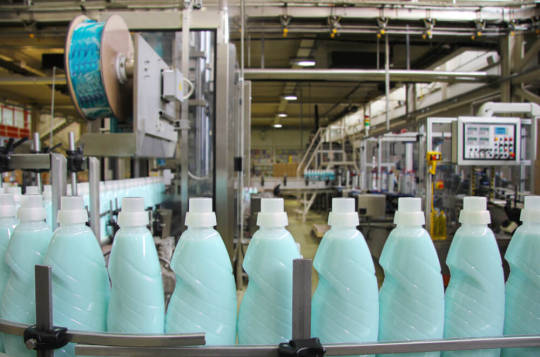
How Traditional Detergents Are Made?
The creation of traditional laundry detergents is an intricate process carried out in expansive industrial complexes. It starts with producing synthetic surfactants, the primary cleaning agents, often derived from petrochemicals through energy-intensive reactions. These surfactants are combined with a host of other chemicals like builders to soften water, enzymes to tackle proteins and starches, and additional agents such as fragrances and optical brighteners for aesthetic appeal. While these ingredients enhance the cleaning properties and sensory experience, they can be environmentally persistent and potentially harmful to aquatic ecosystems upon entering water bodies.
Considerable water is used in making liquid detergents, and the energy consumed in heating and transporting these products adds to their carbon footprint. The packaging of these detergents, predominantly plastic, presents further environmental challenges. Many of these plastics are not fully recyclable, leading to an accumulation of waste in landfills and oceans, where they can take centuries to break down, leaking pollutants and posing risks to wildlife. The environmental impact of these practices has led to a push for more sustainable laundry products that prioritize biodegradable ingredients, reduced packaging, and energy-efficient production.
The Creation of Laundry Sheets
Laundry sheets are developed through eco-friendly processes that significantly reduce the consumption of water and energy. Active ingredients are applied onto sheets made from biodegradable materials, allowing them to decompose naturally and lessen the environmental impact. The production of these sheets focuses on a minimalist approach, not only in the product design but also in the packaging, which utilizes materials that are recyclable or compostable, aligning with a commitment to sustainability.
Chemical Composition and Skin Sensitivity
This section delves into the chemical makeup of laundry detergents and their implications for skin sensitivity. We’ll uncover how the traditional detergent industry’s reliance on harsh chemicals contrasts with the emerging trend of laundry sheets that prioritize skin health and environmental sustainability. Additionally, we’ll highlight the innovative formulations of laundry sheets that are setting new standards for gentle, skin-friendly cleaning.
Chemicals in Traditional Detergents
Traditional detergents can contain a variety of chemicals that may cause skin irritation or allergic reactions in sensitive individuals. Phosphates, which are often used to soften water and improve cleaning efficiency, can lead to skin problems and have a detrimental effect on aquatic life when they enter waterways.
How Does Traditional Laundry Detergent Harm The Environment
Laundry detergent is far more than just a basic cleansing soap. It contains a huge number of harmful chemicals that have a serious impact on our environment. Some of the most concerning ones are:
Phosphates – linked to cardiovascular (heart) disease as well as osteoporosis. These toxins are particularly damaging to the marine environment when dispersed in wastewater from your wash.
Bleach – often used to brighten whites, its toxic fumes cause respiratory distress and on contact with skin and eyes it is able to cause caustic burns.
Formaldehyde – A chemical usually associated with the preservation of dead bodies. This toxic ingredient as classified by the EPA, is a class B1 probable carcinogen. This means it has been linked with an increased risk of cancer.
Ammonium Sulfate and Ammonium Quaternary Sanitizers – harsh cleansing agents that are corrosive and toxic. They can cause eye, skin and lung damage even with minimal exposure.
Dioxane (1,4 Dioxane/ Diethylene Dioxide/ Diethylene Ether/ Dioxan) is quite possibly one of the worst additives. Dioxane is also a carcinogen and has been known to pose a combustion risk. Exposure to this toxin can damage your kidneys, lungs, central nervous system, eyes, skin and respiratory function.
The Hypoallergenic Nature of Laundry Sheets
Laundry sheets are intentionally formulated with a minimalistic chemical composition, often utilizing natural ingredients and plant-based surfactants. This streamlined approach not only reduces potential skin irritants but also caters to those with sensitive skin or allergies. Unlike traditional detergents, which may contain a plethora of synthetic chemicals, laundry sheets opt for milder cleaning agents that provide effective cleaning without the risk of allergic reactions. Their hypoallergenic properties make them a preferred choice for consumers seeking a skin-friendly laundry solution.
Moreover, the gentleness of laundry sheets extends to the care of fabrics. They are designed to clean without compromising the textile’s structure, thereby preserving the longevity of clothing. The environmental benefits are equally significant; the biodegradable nature of these sheets means they break down naturally without leaving harmful residues in water or soil, aligning with eco-conscious practices and reducing the ecological impact of laundry activities.

Usage and Efficacy
Laundry sheets are redefining fabric care with their innovative approach to efficacy and usage. These eco-friendly alternatives to traditional detergents deliver effective cleaning power in a pre-measured, dissolvable sheet, minimizing waste and preventing the common issue of detergent residue. While traditional detergents offer a broad spectrum of enzymes for various stains, laundry sheets maintain a competitive edge with their simplicity and suitability for both hot and cold water cycles, catering to the needs of the environmentally and health-conscious consumer.
Effectiveness of Traditional Detergents
Traditional detergents have been optimized for performance across a spectrum of conditions. They are formulated to work in various water temperatures, from cold to hot, and are effective for different load sizes. The presence of specific enzymes and other chemicals in these detergents means they can tackle a wide range of stains, from protein-based to grease and oil.
However, the effectiveness of traditional detergents can be influenced by the hardness of the water and the accuracy of the dosage. Overuse is common, leading not only to wasted detergent but also to potential residue on clothes and in machines.
Performance of Laundry Sheets
Laundry sheets are designed for convenience and simplicity. They dissolve easily in both hot and cold water and are pre-measured to avoid the issue of overuse. While they may not contain the same range of targeted enzymes as traditional detergents, many users find them effective for general laundry needs and appreciate the added benefit of fabric care due to their gentle formulation.
Comparative studies and consumer feedback suggest that laundry sheets perform well in everyday laundry scenarios, though heavily soiled items may require additional treatment or a double dose of the product.
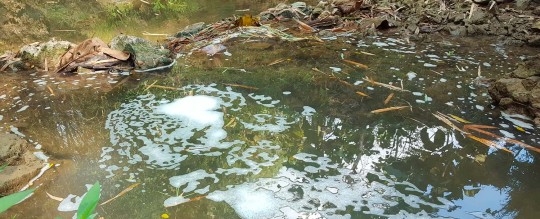
Environmental Impact
The Ecological Footprint of Traditional Detergents
The environmental impact of conventional laundry detergents is increasingly recognized. These detergents often fail to fully biodegrade, releasing harmful substances into our water systems, including rivers and oceans. Toxic elements such as cadmium and arsenic, which are sometimes present in detergents, can pose significant risks to aquatic ecosystems. Research indicates that phosphates, frequently used in these cleaning products, accumulate in bodies of water, causing eutrophication. This process results in excessive algal growth, which depletes oxygen in the water and can suffocate aquatic life, including fish and plants.
The Sustainable Advantage of Laundry Sheets
Laundry sheets are at the forefront of sustainable fabric care, distinguished by their environmentally conscious components and manufacturing process:
Plant-Based Surfactants: Unlike traditional detergents that rely on petrochemicals, laundry sheets use surfactants derived from renewable plant sources, which offer effective cleaning while being more gentle on the environment.
Biodegradable Fibers: The structural material of the sheets is composed of biodegradable fibers that break down naturally, leaving no harmful residues in the ecosystem.
Natural Enzymes: To tackle various stains, laundry sheets incorporate enzymes sourced from natural organisms, ensuring biocompatibility and reducing the risk of aquatic toxicity.
Minimalist Packaging: Emphasizing sustainability, the packaging of laundry sheets is designed to be either fully recyclable or compostable, contributing to waste reduction goals.
Carbon Footprint Reduction: The compact and lightweight format of laundry sheets significantly lowers the carbon emissions associated with their transportation and distribution.
Water Conservation: By providing a pre-measured amount of detergent, laundry sheets eliminate the common problem of overuse, saving water and reducing the frequency of purchasing new detergent.
Cost Analysis
The Economic Costs of Traditional Detergents
When considering the economic implications of traditional detergents, the initial purchase price represents just a fraction of the actual cost. Consumers often use more detergent than necessary, influenced by the misconception that more soap equals cleaner clothes. This habit of overuse not only increases household expenses over time but also accelerates the depletion of detergent supplies, necessitating more frequent purchases. Furthermore, the environmental degradation caused by these detergents, including water pollution and the energy-intensive production process, incurs hidden costs that are absorbed by communities and ecosystems.
These hidden environmental costs have far-reaching economic consequences. The pollution of waterways necessitates additional treatment for safe use, which can strain municipal budgets and lead to increased utility bills for residents. Waste management becomes more complex and costly as well, with plastic packaging from detergents contributing to the growing volume of refuse that requires processing. Over time, these environmental and societal costs can lead to higher taxes and living expenses, illustrating that the true cost of traditional detergents extends well beyond their shelf price.
Cost-Effectiveness of Laundry Sheets
Laundry sheets offer a more economical alternative to traditional detergents over time. Their pre-measured design eliminates the guesswork and prevents the common issue of detergent overuse, ensuring optimal use of every sheet. This not only conserves the product but also translates into direct savings for consumers, who will purchase laundry detergent less frequently. Additionally, the compact and lightweight nature of laundry sheets reduces manufacturing and shipping costs. These savings can be passed on to the consumer, making laundry sheets a cost-effective choice.
The environmental advantages of laundry sheets also contribute to their cost-effectiveness. By minimizing the use of plastics in packaging and reducing the reliance on harsh chemicals, laundry sheets lessen the burden on waste management systems and decrease the need for environmental remediation efforts. These reductions have a ripple effect, potentially lowering community expenses related to waste processing and health care costs linked to chemical exposure. Thus, the economic benefits of laundry sheets extend beyond immediate savings, contributing to broader financial advantages for both individuals and society.
Consumer Convenience and Accessibility
Accessibility of Traditional Detergents
Traditional detergents enjoy a stronghold in the marketplace, largely due to their pervasive presence across various retail environments. From expansive supermarkets to modest corner shops, these detergents are readily available, making them a convenient choice for the everyday shopper. The extensive distribution network of these products ensures that they are within easy reach for most consumers, contributing to their continued popularity.
This market saturation is underpinned by years of established brand presence and consumer loyalty, which have been cultivated through persistent marketing efforts and ongoing product innovation. Such brand familiarity reassures consumers, often making traditional detergents a default purchase. The result is a self-reinforcing cycle of accessibility and demand, maintaining the status quo of traditional detergents as a household staple.
The Rising Popularity of Laundry Sheets
Laundry sheets are a relatively recent innovation in the home care market, but they are quickly carving out a significant niche. Their appeal lies in the combination of user-friendly convenience and a strong eco-conscious ethos, which aligns with the values of a growing segment of consumers. The shift towards environmentally responsible products has been a key driver in their burgeoning popularity.
Moreover, the advent of e-commerce has played a pivotal role in making laundry sheets more accessible to a wider audience. They are prominently featured on various online shopping sites, dedicated platforms for sustainable goods, and are increasingly making their way onto the shelves of traditional retail outlets. This expanding availability is a testament to the changing consumer preferences and the evolving landscape of the household cleaning market, where sustainability is becoming as important as efficacy.

Disposal and Recycling
Disposal Issues with Traditional Detergent Containers
The disposal of traditional detergent containers poses significant challenges. While many are technically recyclable, the reality is that a substantial portion ends up in landfills due to contamination or improper disposal. The impact of this plastic waste is far-reaching, contributing to the growing problem of environmental pollution and the depletion of resources required to produce new plastic containers.
Disposal of Laundry Sheets
In contrast, laundry sheets offer a more environmentally friendly end-of-life scenario. Their packaging is often designed to be compostable or recyclable, aligning with zero-waste principles. The sheets themselves, being biodegradable, leave no trace once they dissolve in water, which significantly reduces their environmental impact compared to traditional detergents.
The Future of Laundry Detergents
Innovations in Traditional Detergent Formulations
The landscape of the detergent industry is dynamic, with continuous advancements shaping the future of laundry care. Recognizing the growing environmental concerns, many detergent brands are actively seeking to minimize their ecological footprint. This pursuit of sustainability has led to the creation of highly concentrated detergent formulas, which deliver the same cleaning power in smaller doses, thereby reducing the need for excessive packaging.
Alongside concentration, there’s a shift towards incorporating plant-derived ingredients, which are gentler on the environment and often renewable. These natural components are increasingly replacing their synthetic counterparts, contributing to a cleaner production process and a safer product for both consumers and the planet. Additionally, the industry is experimenting with refillable detergent systems, aiming to cut down on single-use plastic containers and encourage a reuse mindset among consumers, further aligning product design with environmental responsibility.
The Evolution of Laundry Sheets
Laundry sheets stand at the forefront of innovation within the home care sector, with their trajectory set towards expansion and refinement. Technological advancements are paving the way for these products to boast enhanced cleaning efficacy, catering to a variety of fabric types and stains with greater precision. As the industry evolves, consumers can anticipate a wider selection of fragrances and specialized features tailored to specific laundering needs, from delicate care to robust stain removal.
The environmental aspect of laundry sheets is also expected to improve, with ongoing research into even more sustainable materials and manufacturing processes. The commitment to eco-friendliness is a strong selling point that resonates with the modern consumer, and as awareness of environmental issues grows, so does the demand for products that align with a sustainable lifestyle. This growing consumer consciousness is likely to drive further innovations in laundry sheets, ensuring they not only clean clothes effectively but also contribute positively to the health of our planet.
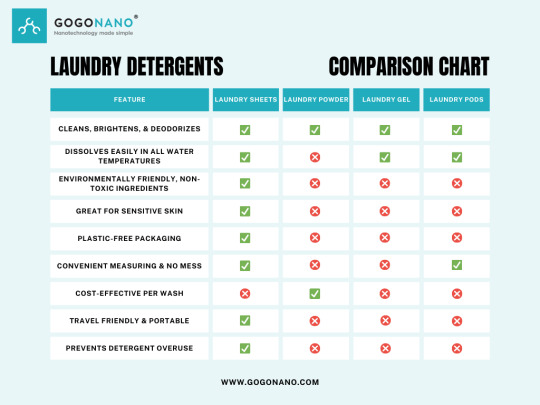
Final Thoughts
Throughout this guide, we have delved into the complex world of laundry care, examining the strengths and weaknesses of both traditional detergents and the emerging laundry detergent sheets. We’ve seen how the tide is turning in favor of sustainability in our cleaning habits, a change driven by increased global awareness and responsibility. As the public becomes more attuned to the environmental ramifications of their choices, laundry sheets emerge as a beacon of innovation, offering a path to a more sustainable and environmentally considerate future in home care. Embrace the change and join the movement towards a cleaner planet—make the switch to GoGoNano laundry detergent sheets today and be part of the solution for a greener tomorrow.
#nanotechnology#ecofriendly#sustainability#zerowaste#laundry sheets#laundry detergent sheets#laundry strips#plastic free laundry detergent#cleaning guide#gogonano
0 notes
Text
How to Safely Clean All Surfaces from Viruses?

Careful hand washing and use of disinfectants and wearing protective masks are an important part of limiting the spread of corona and other viruses. For safe disinfection, we have developed a natural cleaning and disinfecting agent that safely destroys viruses, bacteria, fungi, Gram-negative (for example, the causative agent of tuberculosis) and Gram-positive bacteria from any surfaces and materials.
Corona challenge
In light of recent events, GoGoNano has adapted its core activities as a green chemistry and technology provider to provide support during the global corona pandemic. We remain focused on core values that positively impact people and the environment.
Our mission is to provide products and technology to reduce and/or replace toxic disinfectant chemicals and support people in reducing infectious diseases. With the goal of saving people and making our planet friendly.
Lactic acid is much more effective against corona & other viruses
GoGoNano Anti-Viral is a lactic acid-based deep-cleaning disinfectant that helps fight not only corona but also all other pathogens in a safe and sustainable way. Its biodegradable composition with surface-active particles effectively destroys bacteria, virus particles and fungi and does not damage delicate materials. Therefore, it is well suited for cleaning all objects and surfaces that have come into our homes from the outside, such as food packaging, clothes worn while shopping or other soft objects that cannot be properly disinfected with ethanol.
GoGoNano antiviral and antibacterial disinfectant has been proven effective against various harmful pathogens and bacteria. Corona can survive on different surfaces for several days. Therefore, disinfection and cleaning are extremely important. The product is specially designed for this task.
youtube
SAFE CLEANING AGENT FOR BOTH HOME AND OFFICE
Lactic acid is a natural, safe and effective alternative to synthetic antiviral agents. It is a naturally occurring acid that is produced during the acidification of milk, as well as in humans and animals as a result of physical activity. While most disinfectants work with the support of three biocidal mechanisms, lactic acid has four of these mechanisms, which is why it is much more difficult for pathogens to become resistant to it.
Thanks to this, lactic acid has proven itself as an effective defense against a large number of different pathogens. Its combination of effectiveness and safety for human health has made lactic acid a popular cleaning agent in both homes and businesses, such as catering kitchens and stores, where the need for deep cleaning and disinfection is constant.
Which surfaces should be disinfected?
During the disease season, surface cleaning should be done daily as a routine. It is important to notice which surfaces come into contact more often, especially in frequently used rooms. If you don’t know which places need to be cleaned, spend some time observing which surfaces people come into contact with most often.
The following areas and items usually require more frequent cleaning:
– door handles
– elevator buttons
– toilet and bathroom surfaces
– switches
– handrails
– chair armrests
– tables
– work surfaces
In order to effectively prevent the spread of the virus, surfaces should be cleaned as often as possible. In public spaces, this should be done no less than every 2-4 hours. In addition to the mentioned surfaces, the edges of doors and other shared objects also need attention.
Lactic acid has fast-acting, effective antiviral properties
Most products available take 5-10 minutes to work on viruses, leaving the possibility that not everything will be removed. In addition, a large amount of the product is required for effective work, which limits its use and increases toxic side effects. Our lactic acid based antiviral organic cleaner has been tested and proven to work instantly. It removes all viruses within one minute of use. We believe that it is necessary to invest in a more efficient and ecological solution to prevent diseases along with the safety of our environment and human health.
A SAFE ALTERNATIVE TO TOXIC DISINFECTANTS
“Our mission is to provide alternative products and technology to reduce and/or replace toxic disinfectant chemicals on the market and support people in reducing infectious diseases. With the goal of saving people and making our planet friendly,” says GoGoNano creator Kaur Reinjärv. “In the form of lactic acid, we found an ideal tool that fights diseases much more effectively and does not harm people or nature.”

Nano coatings for clothing, vehicles and electronics
We are an Estonian brand of nanotechnological protective equipment, where apart from fighting diseases, we have also stood up against the modern throw-away culture. Our sustainable nano-protectors help keep electronic devices, clothes, shoes and even cars looking like new for a long time, so that you can use them for as long as possible, thereby wasting as little money and natural resources as possible.
#antiviral#nanotechnology#coronavirus#disinfectant#gogonano#no alcohol#viruses#natural cleaning#sustainable#ecofriendly#sustainability#green chemistry#Youtube
3 notes
·
View notes
Text
Stay Clear-Eyed: How to Prevent Your Glasses from Fogging Up

Have you ever seen an apple fall out? Or a person walking on water? Maybe even chilled your hands over the fire? If not, it makes perfect sense, because the laws of physics are unwavering. However, we say that with the help of nanotechnology, at least one of them can be countered!
In cool weather, glasses wearers face one seasonal problem – they keep fogging up. Every time you step into a room or car from outside, put a scarf over your mouth or put on a mask, the glasses become foggy. Then it takes more time to wipe them, and in fact, it may not be possible to get the glasses clean on the first try. At GoGoNano, all our products are aimed at simplifying the customer’s life through small changes using the innovative possibilities of nanotechnology.
The new Anti-Fog cleaning cloth serves the same purpose. It is a reusable microfiber cloth that has been enhanced with nanotechnology to achieve anti-fog and protective properties for glasses.

Why do my glasses fog up so quickly?
Temperature and humidity play a role in the formation of fog on the glass. It is known that water changes its shape depending on whether it is warmer or colder. A change in temperature and an aerosol in the air is necessary for the formation of fog. As the warm breath evaporates, the condensed water vapor adheres to the cool glass. This is the moment when you wish that cleaning your glasses was faster and easier.
In our climate, a slight fog can also occur on smart devices, and as you know, using a touch screen is complicated in this case. Condensed water, however, sticks where dust particles are already present. Therefore, the more carefully you keep the surfaces clean, the lower the risk of fogging. In addition, keeping glasses and screens warm to reduce contrast with face or room temperature also helps prevent fogging.
How to prevent glasses from fogging up?
There are already many anti-fog products on the market. Most of them are sprayable, and using such a substance on the lens of the glasses can break down the protective layers that already exist. As a result, the glass gets scratched and dirty more easily, which is why the glasses need to be replaced with new ones sooner than expected. The same applies to various home methods, which are certainly not wise to use on expensive eyeglass lenses.
With the Anti-Fog cleaning cloth, however, you don’t have to feel such fear. Safely and environmentally friendly, nanotechnology gives the microfiber cloth cleaning properties and immediately gives the glass the necessary protective layer.
Condensation of water vapor on eyeglass lenses can be not only uncomfortable but also dangerous depending on the situation. Clear vision is a priority when driving and working with machines. Fortunately, the Anti-Fog cleaning cloth stops glasses from fogging up, and it’s worth keeping around from now on.
#nanotechnology#gogonano#sustainability#green chemistry#ecofriendly#antifog#fogging#cleaning cloth#cleaning guide#glass cleaning#nano enhanced#nano coating
0 notes
Text
Step into Dryness: The Ultimate Guide to Waterproofing Shoes

Wet feet can put a damper on any outdoor adventure, whether you’re hiking, camping, or simply navigating a rainy day. But with the right waterproofing techniques and products, you can keep your feet dry and comfortable no matter what the weather has in store. In this comprehensive guide, we’ll cover everything you need to know about waterproofing shoes and provide helpful tips to ensure you never have to suffer from soggy feet again.
The Importance of Waterproof Shoes
Waterproof shoes play a crucial role in keeping your feet dry, protected, and comfortable during outdoor activities. Not only do they prevent the unpleasant sensation of wet feet, but they can also help to prevent blisters, cold feet, and other related issues. Moreover, waterproof shoes can extend the life of your footwear by protecting them from the damaging effects of water and moisture.
Types of Waterproofing for Shoes
There are several methods available for waterproofing shoes, each with its own unique benefits and drawbacks. In this section, we’ll explore the most common types of waterproofing and help you determine which method is best for your needs.

Wax and Waterproofing Sprays
Wax and waterproofing sprays are simple and convenient options for waterproofing shoes. They are easily accessible at most outdoor gear stores and can be quickly applied to the surface of your shoes. Simply spray or rub the waterproofing product onto the shoes, allow it to dry, and enjoy the protection it provides. However, it’s important to note that some sprays and waxes may darken the color of your shoes and affect the breathability of the material. With GoGoNano waterproofing sprays you can be sure that material color or breathability won’t change.
Sealed and Waterproof Shoes
For those who are in the market for new shoes, purchasing a pair that is already sealed and waterproof is another option. Shoes designed for outdoor activities often feature waterproof materials, such as Gore-Tex, that provide excellent protection from water. This is a great choice for those who want the peace of mind that comes with knowing their feet will be dry and comfortable, without having to worry about reapplying a waterproofing product. Be sure that even the Gore-Tex’s waterproofing properties will fade away over time. Applying a waterproofing solution will enhance the material and water repellent properties will be active again.
Waterproof Socks
Another option for waterproofing shoes is waterproof socks. These are designed to be worn inside your shoes and provide a barrier between your feet and the water. They come in a variety of styles and sizes and are made from waterproof materials like Gore-Tex. This is a good choice for those who want to keep their current shoes and add an extra layer of protection. However, it’s important to make sure the socks fit well and don’t bunch or slide around inside the shoes, as this can cause discomfort.
youtube
DIY Waterproofing at Home
If you prefer not to buy a new pair of shoes or waterproofing socks, you can easily waterproof your current shoes at home with a few simple steps.
Clean and Dry the Shoes
The first step in waterproofing your shoes is to thoroughly clean and dry them. Remove any dirt, debris, or grime from the surface of the shoes and make sure they are completely dry before applying the waterproofing product.
Apply Waterproofing Spray or Wax
Next, apply a waterproofing spray or wax to the surface of the shoes. It’s important to follow the instructions on the product and apply it evenly, covering all areas of the shoes. Make sure to apply enough product to create a strong barrier against water. With GoGoNano waterproofing solutions you do not have to worry about material loosing its breathability or discoloring.
Allow the Shoes to Dry Completely
Once you’ve applied the waterproofing product, allow the shoes to dry completely. Our solutions will take 1 hour to dry out but maximum properties will be active after drying overnight. Depending on the product used, the drying time may be different. It’s important to let the shoes dry completely to ensure the waterproofing effect is strong and long-lasting.
Repeat as Needed
Depending on the frequency of use and exposure to water, you may need to reapply the waterproofing product every few months or so. It’s a good idea to regularly check the shoes for any signs of wear and reapply the product as needed to keep them in good condition.
FAQ
To wrap up, we’ve included answers to some frequently asked questions about waterproofing shoes.
Can I waterproof any type of shoes?
Yes, with GoGoNano you can waterproof any type of shoes, as long as they are made from a material that can be treated with a waterproofing product. This includes shoes made from materials like leather, fabric, and suede.
Is waterproofing a one-time process?
No, waterproofing is not a one-time process. The effectiveness of the waterproofing will depend on the frequency of use and exposure to water, and you may need to reapply the product every few months to keep the shoes in good condition.
Can waterproofing affect the breathability of my shoes?
Yes, depending on the type of waterproofing product you use, it can affect the breathability of your shoes. By choosing GoGoNano waterproofing products you can be sure that material color or breathability will not change in any way. Our products are all tested to fit with all the materials or shoe types.
In Conclusion
In conclusion, waterproofing shoes is a simple and effective way to keep your feet dry and comfortable no matter what the weather has in store. With the right waterproofing techniques and products, you can enjoy all your outdoor activities with confidence, knowing that your feet are protected from the elements. So, step into dryness and never suffer from soggy feet again!
#nanotechnology#green chemistry#sustainability#ecofriendly#waterproofing#stainproofing#water repellent#shoe protector#textile protector#leather protector#fashion protector#nano coating#nano tech#cleaning products#cleaning tips#cleaning guide#Youtube
1 note
·
View note
Text
Liquid Screen Protector vs Tempered Glass Screen Protectors
Screen protectors are an essential accessory for any mobile device, whether it’s a smartphone or tablet. They help to protect the screen from scratches and cracks, which can be costly to repair or replace. Traditional tempered glass screen protectors come in various forms, such as tempered glass, plastic films, or polyurethane, but they all share a common drawback: they may leave bubbles, peel off quickly, or trap dust and fingerprints, making the screen look less appealing.
Luckily, a new type of screen protector is gaining popularity: liquid nano screen protector. Unlike traditional plastic screen protectors, liquid protector use nanotechnology to create an invisible and durable layer that adheres to the surface of the screen. Liquid screen protectors promise scratch resistance, impact protection, and a smoother, fingerprint-resistant surface.
In this article, I will cover the power of liquid screen protectors and explore why they are your ultimate solution to scratch-free and clean devices. We will discuss what liquid screen protectors are, how they work, their advantages and disadvantages, and how to apply them to your device.
What is a Liquid Screen Protector?
A transparent and ultra-thin layer, composed of silicone dioxide (SiO2) – a natural compound found in sand and quartz, is the essence of the liquid screen protector. This liquid formula is applied to your device’s screen with an applicator brush or cloth, bonding to the surface to create a uniform and scratch-resistant coating. It is specifically designed to fill in the microscopic pores and scratches on the screen’s surface, which enhances the durability and provides an additional layer of protection against accidental drops or impacts.
How Does a Liquid Screen Protector Work?
Liquid screen protectors use nanotechnology to create a durable and invisible layer on the screen. The liquid is made up of microscopic particles of silicone dioxide (SiO2), which bond to the surface of the screen and create a thin layer of protection.
When the liquid is applied to the screen, the SiO2 particles penetrate the microscopic pores and scratches on the screen’s surface. These particles bond with the glass or plastic of the screen, creating a thin and durable layer of protection that is invisible to the naked eye.
In addition to its protective properties, this innovative solution creates a water-repelling layer on the screen surface. The hydrophobic layer effectively repels water and other liquids, ensuring that accidental spills do not result in water damage. Furthermore, this hydrophobic layer makes cleaning the screen much easier, ensuring that it remains free of smudges and stains.
Advantages of Liquid Screen Protectors
There are several advantages to using an innovative nanotechnology liquid protector over traditional screen protectors:
Scratch resistance: Liquid coating provides a high level of scratch resistance, thanks to the SiO2 particles that fill in the microscopic pores and scratches on the screen’s surface. The protective layer is designed to withstand everyday wear and tear, giving you peace of mind knowing that your device is protected.
Impact protection: The thin layer of protection provided by the liquid screen protector can also help absorb shock from accidental drops or impacts.
Smoother surface: Liquid screen protectors create a smooth and uniform surface that is free of bubbles and dust. This makes the screen look clearer and more vibrant.
Fingerprint resistance: The hydrophobic layer added by the liquid screen protector repels oils and fingerprints, keeping the screen looking clean and smudge-free.
Compatibility: Unlike traditional screen protectors, which come in specific sizes and shapes, liquid screen protectors can be applied to any screen size and shape, making them a versatile option for those with multiple devices.
Easy to apply: One significant advantage of liquid screen protectors is the ease of application. Unlike traditional plastic or glass protectors, there are no air bubbles or misalignments to worry about. The liquid solution is simply wiped onto your device’s screen and then left to dry, forming a perfect protective layer.
Long-lasting: It can last for up to 6 months, providing long-lasting protection and saving you the hassle and cost of replacing traditional screen protectors frequently.
youtube
Disadvantages of Liquid Screen Protectors
While there are many advantages to using a nanotechnologically improved liquid screen protector, there are also some disadvantages to consider:
Limited protection: Liquid screen protectors may not provide as much protection against high-impact drops or scratches as traditional screen protectors.
Higher cost: Liquid screen protectors are may be(but not always) more expensive than traditional screen protectors, although they do provide longer-lasting protection. Although the initial investment may be higher, rest assured that our liquid screen protector is a long-lasting solution that can withstand the wear and tear of up to 25 phones.
What is the Difference Between a Liquid Screen Protector vs Tempered Glass Screen Protector
Liquid nano coatings have emerged as a popular alternative to traditional tempered glass screen protectors, offering a range of appealing advantages. First and foremost, they provide impressive scratch resistance, ensuring that your device’s screen remains pristine and free from unsightly marks.
Additionally, these innovative coatings deliver solid impact protection, guarding your screen from damage caused by accidental bumps or falls. Another notable benefit is their smoother surface, which enhances the user experience by providing a more enjoyable touch-based interaction with your device.
Despite these numerous benefits, traditional screen protectors should not be overlooked, as they may be a more suitable choice for certain users. In particular, those who require heavy-duty protection against high-impact drops or deep scratches may find that traditional screen protectors offer an extra level of security. These reliable protectors come in a variety of materials and thicknesses, allowing users to choose the option that best cater to their specific needs.
Furthermore, traditional screen protectors are often more affordable and easier to install, making them an attractive choice for budget-conscious users or those who prefer a straightforward installation process.

How To Apply a Liquid Screen Protector?
When it comes to applying screen protectors, both traditional plastic film protectors and tempered glass screen protectors require some degree of care and attention. However, liquid screen protectors are often considered easier to apply as they don’t require the same level of precision as plastic film protectors. Applying a liquid screen protector is a straightforward process that can be done in just a few steps:
1. Clean the screen with the provided cleaning cloth to remove any dirt or fingerprints.
2. Apply the nano liquid to the screen using the provided microfiber cloth.
3. Spread the liquid evenly over the screen, making sure to cover all areas.
4. Wait for the liquid to dry completely, which usually takes around 10-15 minutes.
5. Buff the screen with a microfiber cloth to remove any excess liquid and to ensure that the screen is smooth and clear.
6. Repeat the application process two to three times for optimal results.

In Conclusion
In conclusion, the GoGoNano Liquid Shield screen protector offers a revolutionary solution for device protection. Its easy application, invisible protection, enhanced scratch resistance, and compatibility with all devices make it a superior choice for keeping your devices clean and scratch-free. Specifically designed to safeguard smartphones, tablets, computers, glasses, game consoles, and camera lenses, the Liquid Shield screen protector is the ultimate solution for protecting your valuable devices. Give it a try and experience the difference it makes for yourself.
#nanotechnology#green chemistry#sustainability#plasticfree#liquid screen protector#screen protector#smartphone#nano coatings#liquid shield#ecofriendly#invisible#Youtube
0 notes
Text
Introducing GoGoNano — The Revolutionary Nanotechnology Brand
GoGoNano is a revolutionary brand that offers a range of high-quality, eco-friendly, and cost-effective nanotechnology coatings for various applications. The products are easy to apply and offer superior protection compared to traditional coatings. With GoGoNano, users can protect their surfaces while also promoting sustainability and eco-friendliness.

The Science behind Nano Coatings
Nano coatings are a type of protective coating that uses nanotechnology to create a layer of protection on surfaces. The coatings are made up of tiny particles that are thousands of times smaller than a human hair. These particles are able to penetrate the surface, creating a strong bond that provides superior protection.
Nano coatings are known for their hydrophobic and oleophobic properties, which make them water and oil repellent. The coatings can also protect against scratches, corrosion, and UV radiation, making them an ideal solution for surface protection needs.
GoGoNano Products
GoGoNano offers a range of products that are designed for different applications. Some of the products include:
GoGoNano Liquid Skin — A nano ceramic coating that is designed to protect the exterior surfaces of vehicles from dirt, scratches, corrosion, and UV radiation.
GoGoNano Stay Dry — A waterproofing spray designed to protect any fabric from spills, stains, water and UV(discoloring) damage.
GoGoNano Liquid Shield — A nano liquid screen protector designed to protect electronic devices from moisture, dust, scratches and other environmental factors.
GoGoNano Anti-Viral — A new sustainable and universal alcohol-free disinfectant spray that can safely clean and disinfect all surfaces, including clothes and work or kitchen areas.
GoGoNano Anti-fog — A nanotechnologically advanced anti-fog microfiber cloth that helps to achieve the anti-fog and protective properties of glasses. Unlike liquid anti-fog agents, the Anti-Fog cleaning cloth does not damage the existing protective layers on the glass.

How to Apply GoGoNano
Applying GoGoNano is a simple process that can be done by anyone. The products come with easy-to-follow instructions that guide users through the application process. Here are the basic steps for applying GoGoNano:
1. Clean the surface thoroughly to remove any dirt, dust, or debris.
2. Apply a small amount of the GoGoNano product onto the surface.
3. Use a microfiber cloth to spread the product evenly over the surface.
4. Wait for the product to dry completely.
5. Repeat the process if necessary.
It is important to follow the instructions carefully and take the necessary precautions to ensure safety. It is also important to avoid exposing the coated surface to harsh chemicals or abrasive materials that can damage the coating.
Applications of GoGoNano
GoGoNano products have a wide range of applications, including automotive, electronics, healthcare, fashion and aerospace industries. The products can be used to protect various surfaces, including metals, plastics, glass, wood, and fabrics.
In the automotive industry, GoGoNano products can be used to protect the exterior and interior surfaces of vehicles. The products can protect against scratches, corrosion, and UV radiation. In the electronics industry, GoGoNano products can protect electronic devices from moisture, dust, and other environmental factors.
In the healthcare industry, GoGoNano products can be used to create antimicrobial surfaces that prevent the growth of bacteria and viruses. In the aerospace industry, GoGoNano products can be used to protect aircraft surfaces from harsh environmental conditions.
GoGoNano vs. Traditional Coatings
GoGoNano products offer several advantages over traditional coatings. Traditional silicon based coatings are often made from harmful chemicals that can damage the environment and pose a risk to human health. GoGoNano products, on the other hand, are eco-friendly and do not contain any harmful chemicals.
Traditional coatings can also be costly and require regular maintenance. GoGoNano products provide a long-lasting solution that requires minimal maintenance, making them a cost-effective choice.
Additionally, GoGoNano products offer superior protection compared to traditional coatings. The products create a layer of protection that is invisible to the naked eye, yet provides unmatched protection against scratches, UV radiation, and other environmental factors.
Sustainability and Eco-friendliness
Sustainability and eco-friendliness are at the core of GoGoNano’s values. The brand is committed to providing eco-friendly solutions that promote sustainability and reduce the carbon footprint.
GoGoNano products are made from natural and sustainable materials that are safe for the environment. The products are also packaged in recyclable materials, further reducing the environmental impact.
In addition, GoGoNano products are designed to last longer, reducing the need for frequent replacements and minimizing waste. The products also require minimal maintenance, reducing the need for harsh chemicals and other harmful substances.
Customer Reviews
Customers who have used GoGoNano products have praised their effectiveness, ease of application, and eco-friendliness. Many customers have reported that the products have provided long-lasting protection against scratches, UV radiation, and other environmental factors.
Customers have also appreciated the cost-effectiveness of the products, with many reporting that they are a more cost-effective solution compared to traditional coatings.
In Conclusion
GoGoNano is a revolutionary brand that offers high-quality, eco-friendly, and cost-effective nano coatings for various applications. The products are easy to apply and offer superior protection compared to traditional coatings. With GoGoNano, users can protect their surfaces while also promoting sustainability and eco-friendliness.
If you are looking for a solution to protect your surfaces while also promoting sustainability and eco-friendliness, GoGoNano products are the perfect choice. They offer superior protection, ease of application, and are environmentally friendly. So why wait? Try GoGoNano products today and experience the difference!
youtube
#nanotechnology#shoe care#waterproofing#environmentally friendly#sustainability#ceramic coating#nano coating#car detailing#fashion accessories#disinfectants#antifog#liquid screen protector#Youtube
1 note
·
View note
Text
Understanding the Environmental Impact of Household Chemicals
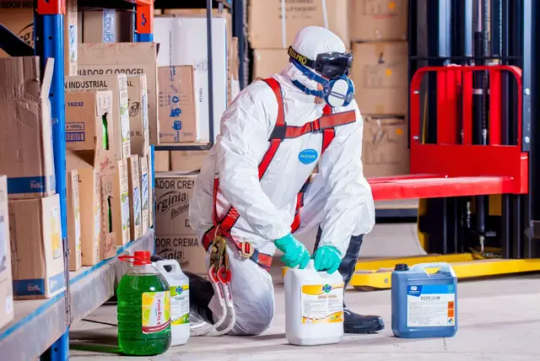
At GoGoNano, we are committed to shedding light on the environmental impact of household chemicals and empowering consumers to make conscious choices. In this article, we will delve into the various aspects of household chemicals and their effects on the environment. Our comprehensive research aims to provide readers with valuable insights and a deeper understanding of this critical issue.
Introduction: The Hidden Dangers in Everyday Products
Household chemicals are ubiquitous in our lives, found in everything from cleaning products to personal care items. While they play a vital role in our daily routines, the impact of these chemicals on the environment often goes unnoticed.
The Scope of Household Chemicals
Household chemicals encompass a broad range of substances, including cleaning agents, pesticides, air fresheners, and personal care products. These chemicals contain various synthetic compounds designed to fulfill specific functions efficiently.
1. Cleaning Agents
Cleaning agents, such as bleach, disinfectants, and detergents, are commonly used to maintain cleanliness and hygiene in our homes. However, some of these agents contain harmful substances that can have adverse effects on the environment.
2. Pesticides
Pesticides are widely used to control pests and insects in and around our homes. While they can effectively eliminate unwanted intruders, their residue can seep into the soil and water, posing a threat to wildlife and ecosystems.
3. Air Fresheners
Air fresheners are designed to create a pleasant ambiance in indoor spaces. Unfortunately, many air fresheners contain volatile organic compounds (VOCs) that contribute to indoor air pollution and, in some cases, can lead to respiratory issues.
4. Personal Care Products
Personal care products like shampoos, soaps, and lotions often contain synthetic chemicals that, when washed down the drain, find their way into water bodies and have the potential to harm aquatic life.
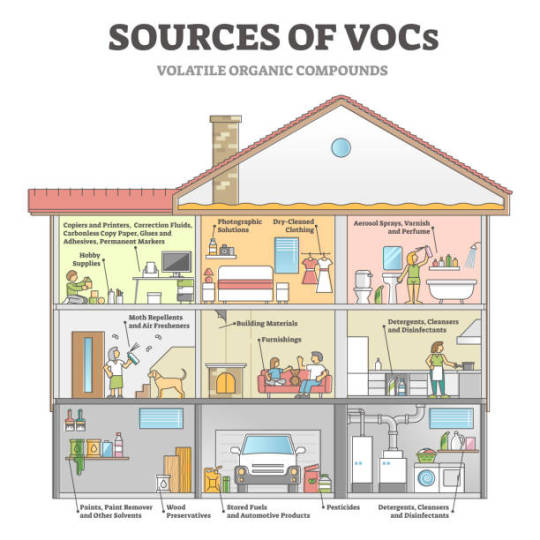
Environmental Impact: Unraveling the Consequences
The use of household chemicals has far-reaching implications for the environment. Understanding these consequences is crucial in making informed choices.
1. Water Contamination
One of the most significant environmental concerns related to household chemicals is water contamination. When these chemicals are disposed of improperly or flushed down the drain, they can infiltrate groundwater or enter rivers and lakes, adversely affecting aquatic ecosystems.
2. Air Pollution
Certain household chemicals release harmful VOCs into the air, contributing to indoor and outdoor air pollution. Prolonged exposure to these pollutants can have detrimental effects on human health and the environment.
3. Soil Degradation
Chemicals from cleaning agents and pesticides can accumulate in the soil, leading to soil degradation and reduced fertility. This can impact plant growth and disrupt natural ecosystems.

Taking Action: Making Environmentally Friendly Choices
As concerned citizens, we can take several steps to mitigate the environmental impact of household chemicals:
1. Read Labels Carefully
Before purchasing any household chemical, carefully read the product labels. Look for eco-friendly and biodegradable options that are less harmful to the environment.
2. Reduce Single-Use Products
Opt for reusable and refillable containers whenever possible, reducing the need for excessive single-use packaging.
3. DIY Cleaning Solutions
For a more eco-friendly approach to cleaning, we recommend considering the use of GoGoNano cleaning products. However, if you prefer a do-it-yourself (DIY) approach, you can still make conscious choices by creating cleaning solutions with natural ingredients like vinegar, baking soda, and essential oils.
While these alternatives are effective in keeping your home clean, they also have the added benefit of being safer for both the environment and your health. Nevertheless, for a hassle-free and highly effective cleaning experience, GoGoNano home hygiene products offer a sustainable and eco-conscious solution that aligns with your commitment to a greener lifestyle.
4. Proper Disposal
Always dispose of household chemicals according to local regulations. Many communities have specific guidelines for hazardous waste disposal.
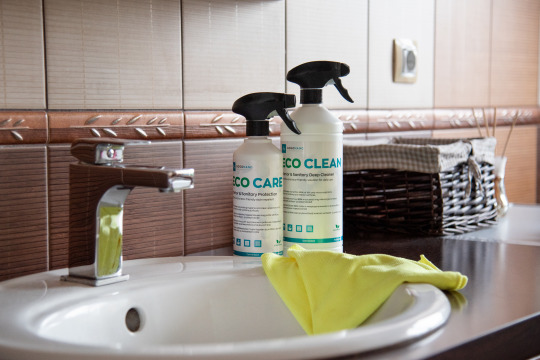
Conclusion: A Greener Future
In conclusion, the impact of household chemicals on the environment is a matter of great concern. By raising awareness and making informed choices, we can collectively work towards a greener and more sustainable future. Let us take responsibility for our actions and safeguard the environment for generations to come. At GoGoNano, we are committed to providing eco-conscious solutions and promoting environmentally friendly practices.
Together, we can make a difference and create a healthier planet for all.
#greener future#household chemicals#diy#cleaning#cleaning guide#ecofriendly#sustainability#environment#climate#vocs#nanotechnology#green chemistry
0 notes
Text
The Ultimate Guide to Choosing the Best Microfiber Cloth for All Surfaces
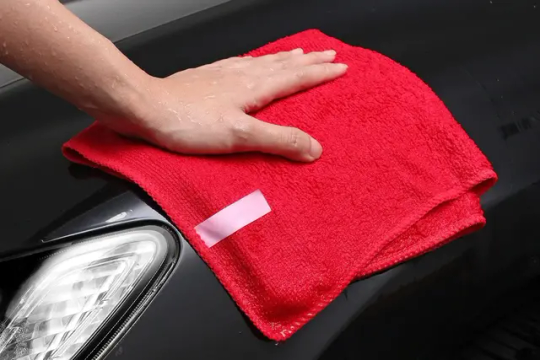
Welcome to our comprehensive guide on choosing the best microfiber cloth for all surfaces. At GoGoNano, we pride ourselves on providing the highest quality microfiber products that not only deliver exceptional results but also help you maintain a clean and pristine environment. In this guide, we will explore the key factors to consider when selecting a microfiber cloth, the benefits it offers, and how to use it effectively on various surfaces. Let's dive in!
Why Microfiber Cloths?
Microfiber cloths have revolutionized the cleaning industry due to their superior cleaning capabilities. These innovative cloths are made from ultra-fine synthetic fibers that are much thinner than a human hair. The unique structure of microfiber allows it to trap and hold onto dust, dirt, and debris more effectively than traditional cleaning materials like cotton or paper towels.
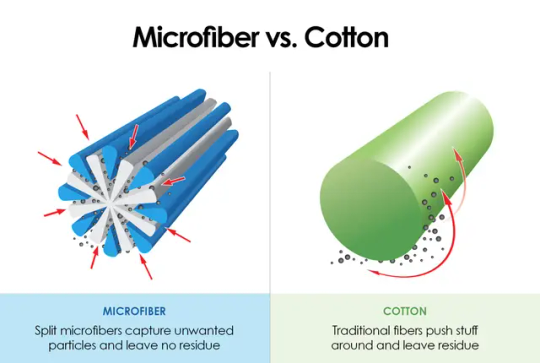
Key Factors to Consider
When choosing a microfiber cloth, several factors come into play to ensure you select the most suitable option for your cleaning needs. Let's examine these factors in detail:
1. Fiber Quality and Composition
The quality and composition of the microfiber fibers significantly impact their performance. Look for cloths made from high-quality synthetic fibers, such as polyester and polyamide. These materials offer excellent absorbency and durability, ensuring your cloth will stand the test of time.
2. Density and Thickness
The density and thickness of the microfiber cloth determine its cleaning efficiency. Opt for a cloth with a high GSM (grams per square meter) count, as this indicates a denser and more effective cloth. Thicker microfiber cloths provide better absorption and particle retention, ensuring a thorough clean.
3. Size and Texture
Consider the size and texture of the microfiber cloth based on the surfaces you intend to clean. For larger areas, a larger cloth will be more efficient, while a smaller cloth can be ideal for tight spaces. Additionally, choose a cloth with a soft and non-abrasive texture to prevent any potential scratches or damage to delicate surfaces.
4. Color-Coding System
Implementing a color-coding system with your microfiber cloths can help prevent cross-contamination and ensure hygienic cleaning practices. Assign different colors to specific areas or tasks, such as blue for glass cleaning and green for kitchen surfaces. This practice promotes a more organized and effective cleaning routine.
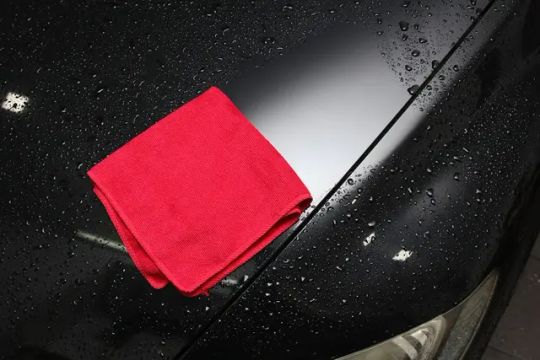
Benefits of Microfiber Cloths
Microfiber cloths offer a range of benefits that contribute to their superior cleaning performance. Let's explore the advantages you can enjoy by incorporating microfiber cloths into your cleaning arsenal:
1. Enhanced Cleaning Power
The exceptional cleaning power of microfiber cloths allows you to achieve remarkable results with minimal effort. The fine fibers effectively capture and retain dirt, grime, and bacteria, leaving surfaces spotless and hygienic.
2. Versatility
One of the key advantages of microfiber cloths is their versatility. They can be used on various surfaces, including glass, countertops, stainless steel, tile, and even delicate items like electronics or eyeglasses. This versatility makes microfiber cloths a valuable tool for all your cleaning needs.
3. Eco-Friendly Solution
By opting for microfiber cloths, you're making an environmentally friendly choice. These reusable cloths significantly reduce the need for disposable paper towels, helping to minimize waste and promote sustainability.
4. Time and Cost Savings
Microfiber cloths offer long-lasting durability, making them a cost-effective choice in the long run. Additionally, their efficient cleaning capabilities mean you spend less time and effort on cleaning tasks, allowing you to focus on other important activities.
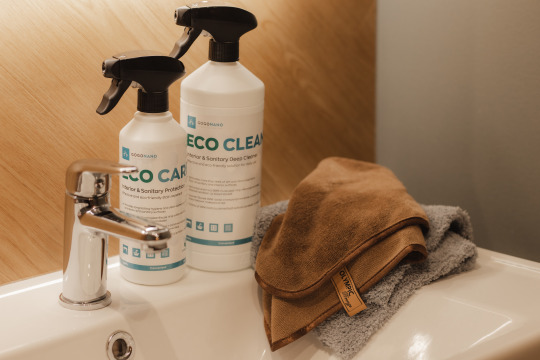
How to Use Microfiber Cloths Effectively
To maximize the effectiveness of your microfiber cloths, follow these guidelines for proper usage:
Preparation: Before using a new microfiber cloth, wash it according to the manufacturer's instructions. This step removes any residue from the manufacturing process and ensures optimal performance.
Dry Use: For dusting or light cleaning, use a dry microfiber cloth to attract and trap dust particles effectively. Simply wipe the cloth gently over the surface to remove dust without leaving any scratches.
Damp Use: For more stubborn dirt or spills, slightly dampen the microfiber cloth with water or a mild cleaning solution. Avoid using excessive moisture, as microfiber cloths are highly absorbent and require minimal liquid for effective cleaning.
Technique: When cleaning, use light pressure and make gentle circular motions. This technique helps the microfiber cloth to lift and capture dirt effectively. For larger surfaces, fold the cloth into quarters to utilize multiple clean sides.
In Conclusion
Choosing the best microfiber cloth is an essential step towards achieving impeccable cleaning results. By considering factors such as fiber quality, density, size, and color-coding, you can ensure you have the right tool for the job. Microfiber cloths offer unmatched cleaning power, versatility, and eco-friendly benefits, making them a top choice for both professional cleaners and homeowners. Incorporate these tips into your cleaning routine and experience the transformative effects of microfiber technology.
Remember, at GoGoNano, we are committed to delivering the highest quality microfiber products to meet all your cleaning needs. Explore our range of premium microfiber cloths today and elevate your cleaning experience!
0 notes
Text
The Revolutionary History of Nanotechnology

Nanotechnology, a groundbreaking field that has revolutionized numerous industries, continues to shape the world as we know it. In this article, we delve into the rich history of nanotechnology, exploring its origins, major milestones, and transformative applications. Join us on this captivating journey through the nano realm and discover how this remarkable technology has reshaped various sectors, from healthcare and electronics to energy and materials science.
Origins of Nanotechnology
Unveiling the Nanoscale
Nanotechnology finds its roots in the exploration of the minuscule world at the nanoscale. The concept of nanoscale was first introduced by physicist Richard Feynman in his visionary lecture in 1959, where he discussed the potential for manipulating matter at the atomic and molecular levels. This groundbreaking concept laid the foundation for the birth of nanotechnology.
The Birth of Nanotechnology
In 1981, the term "nanotechnology" was officially coined by engineer K. Eric Drexler in his influential book, "Engines of Creation." Drexler envisioned a future where nanomachines could manipulate matter at the atomic scale, leading to remarkable advancements in various fields. His work served as a catalyst for the rapid development of nanotechnology research and applications.
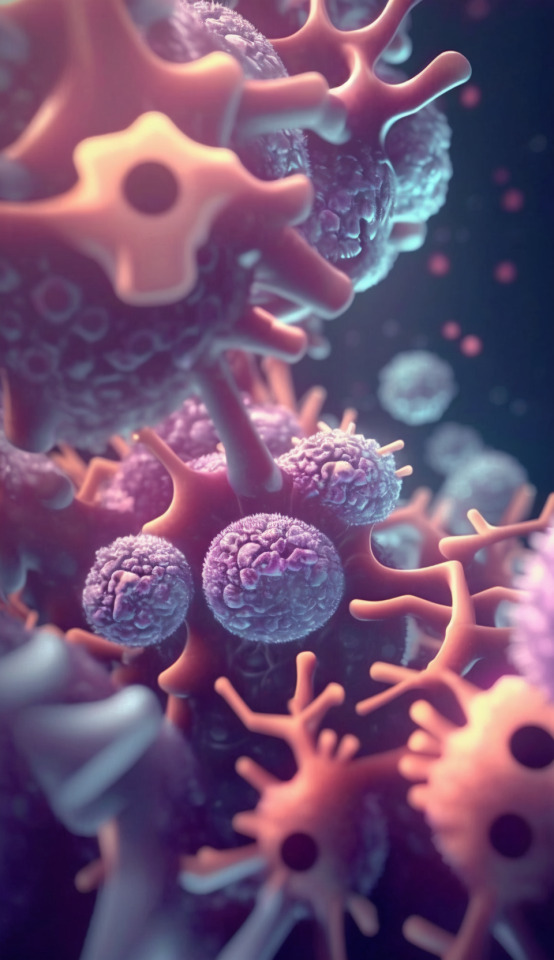
Major Milestones in Nanotechnology
Scanning Probe Microscopy
In the early 1980s, the invention of scanning probe microscopy revolutionized nanotechnology research. The scanning tunneling microscope (STM) and atomic force microscope (AFM) allowed scientists to visualize and manipulate individual atoms and molecules with unprecedented precision. These breakthroughs opened up new possibilities for studying nanoscale phenomena and laid the groundwork for further advancements in the field.
Fullerenes and Nanotubes
In 1985, a significant discovery shook the scientific community—the identification of fullerenes. Researchers Robert Curl, Harold Kroto, and Richard Smalley stumbled upon these unique carbon molecules, marking the birth of a new class of nanomaterials. Fullerenes paved the way for the development of carbon nanotubes, cylindrical structures with remarkable strength and conductivity. These nanotubes would go on to become key building blocks in various nanotechnology applications.
Nanotechnology in Medicine
Nanotechnology's potential to revolutionize healthcare became evident with the advent of targeted drug delivery systems. Nanoparticles, such as liposomes and polymeric nanoparticles, can be designed to encapsulate drugs and deliver them precisely to targeted cells or tissues. This approach minimizes side effects and maximizes therapeutic efficacy. Additionally, nanotechnology plays a vital role in imaging techniques, enabling highly sensitive and precise detection of diseases at the molecular level.
Nanoelectronics and Quantum Computing
The relentless pursuit of smaller, faster, and more energy-efficient electronics led to the emergence of nanoelectronics. By utilizing nanoscale materials and devices, researchers have pushed the boundaries of traditional silicon-based technology. Nanoscale transistors, quantum dots, and nanowires have paved the way for advancements in computing power, memory storage, and energy efficiency. Furthermore, the field of quantum computing, which harnesses quantum phenomena at the nanoscale, holds the promise of solving complex problems that are currently beyond the capabilities of classical computers.
Nanomaterials and Energy
Nanotechnology has also played a significant role in addressing global energy challenges. By developing advanced nanomaterials, scientists have made strides in enhancing solar cell efficiency, enabling the production of clean and renewable energy. Nanomaterials have also been employed in energy storage devices, such as batteries and supercapacitors, to improve their performance and longevity. Additionally, nanotechnology has opened up avenues for energy harvesting and energy conversion, contributing to a more sustainable future.

Transformative Applications of Nanotechnology
Nanomedicine and Disease Treatment
Nanotechnology has revolutionized medicine, offering innovative solutions for disease diagnosis, treatment, and prevention. Targeted drug delivery systems, nanoscale imaging techniques, and nanobiosensors have transformed the landscape of healthcare, enabling personalized and precise interventions. From cancer therapy to regenerative medicine, nanotechnology has the potential to revolutionize patient care and improve outcomes.
Nanoelectronics and Wearable Technology
The marriage of nanotechnology and electronics has given rise to the era of wearable technology. Nanoscale sensors, flexible displays, and energy-efficient components have paved the way for smartwatches, fitness trackers, and augmented reality devices. These advancements in nanoelectronics have made it possible to integrate technology seamlessly into our everyday lives, enhancing convenience and connectivity.
Nanomaterials and Advanced Manufacturing
Nanotechnology has propelled advancements in materials science and manufacturing. Nanomaterials with tailored properties and enhanced performance characteristics have found applications in aerospace, automotive, and construction industries. From lightweight and high-strength composites to self-cleaning surfaces and energy-efficient coatings, nanomaterials have revolutionized product design, durability, and sustainability.
In Conclusion
Nanotechnology's journey from its conceptualization to its present-day applications has been nothing short of extraordinary. The field's remarkable achievements in diverse domains, including medicine, electronics, and energy, continue to drive innovation and shape the future. As we delve deeper into the nanoscale world, the possibilities seem boundless. With ongoing research and collaboration, nanotechnology will undoubtedly unlock new frontiers, leading to breakthroughs that will reshape industries and improve lives across the globe.
#history of nanotechnology#richard feynman#chemestry#green chemistry#nanotechnology#science#nanomaterials#nanocoating#nanomedicine#probe microscopy#revolutionary
3 notes
·
View notes
Text
Achieving Fresh and Odor-Free Shoes with Probiotic Shoe Fresheners
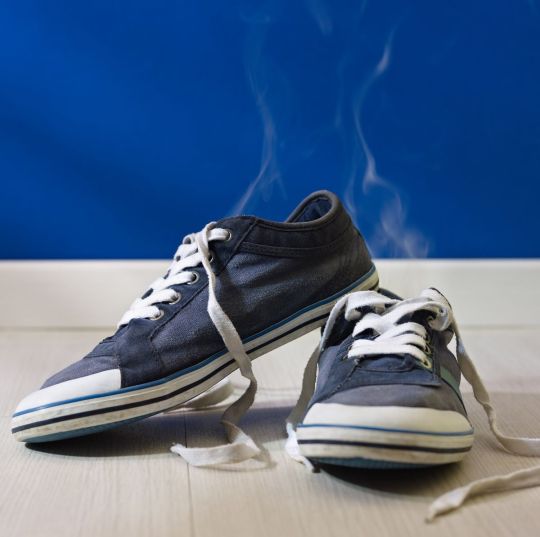
Welcome to our comprehensive guide on achieving fresh and odor-free shoes with the power of probiotics. At GoGoNano, we understand the importance of maintaining clean and fresh footwear. In this article, we will delve into the benefits and effectiveness of probiotic shoe fresheners and how they can help you eliminate unpleasant odors, fight bacteria, and keep your shoes smelling fresh for longer. Say goodbye to smelly shoes and hello to a more enjoyable and hygienic shoe-wearing experience!
Understanding the Power of Probiotics
Probiotics are live microorganisms that offer a wide range of health benefits. Traditionally associated with digestive health, probiotics have also found their way into other areas, including shoe care. These beneficial bacteria help to create a healthier environment by balancing the natural microbiota and inhibiting the growth of harmful bacteria.
The Science Behind Probiotic Shoe Fresheners
Probiotic shoe fresheners harness the power of these beneficial bacteria to tackle the root cause of shoe odor. When applied to shoes, probiotics begin to actively break down organic matter such as sweat, dead skin cells, and other odor-causing substances. By doing so, they eliminate the food source for odor-causing bacteria, preventing their growth and reproduction.

Key Benefits of Probiotic Shoe Fresheners
1. Elimination of Odor at the Source
Unlike traditional shoe fresheners that mask odors temporarily, probiotic shoe fresheners provide long-lasting freshness by eliminating odor at its source. By breaking down organic matter, they prevent the buildup of odor-causing bacteria and ensure your shoes smell fresh for an extended period.
2. Natural and Chemical-Free Solution
Probiotic shoe fresheners offer a natural and chemical-free alternative to combat shoe odor. With increasing awareness about the potential harm associated with harsh chemicals, many individuals are seeking eco-friendly solutions. Probiotic shoe fresheners provide a safe and sustainable option that is gentle on both your shoes and the environment.
3. Enhanced Shoe Lifespan
Regular use of probiotic shoe fresheners not only eliminates unpleasant odors but also helps extend the lifespan of your favorite footwear. By reducing the accumulation of sweat, dead skin cells, and other debris, probiotics prevent the deterioration of shoe materials, ensuring they stay in good condition for longer.
4. Versatile and Easy to Use
Probiotic shoe fresheners are suitable for various types of shoes, including athletic shoes, sneakers, dress shoes, and even sandals. They are easy to apply and require no additional effort or maintenance. Simply spray or insert the fresheners into your shoes, and let the probiotics work their magic.
How to Use Probiotic Shoe Fresheners
Using probiotic shoe fresheners is a breeze. Follow these simple steps to keep your shoes fresh and odor-free:
Shake the probiotic shoe freshener bottle or activate the freshener, depending on the product type.
Insert the freshener pouches or spray the solution directly into your shoes.
Allow the probiotics to work their magic for the recommended duration.
Enjoy fresh, odor-free shoes!
youtube
Additional Tips for Maintaining Fresh Shoes
To further enhance the effectiveness of probiotic shoe fresheners and maintain fresh shoes, consider implementing the following tips:
Ensure your shoes are clean and dry before applying the freshener.
Allow your shoes to air out after use to prevent the buildup of moisture.
Rotate your shoes regularly to give them time to dry and breathe.
Store your shoes in a well-ventilated area to avoid trapped moisture.
Use shoe trees or inserts to help maintain the shape of your shoes.
In Conclusion
With probiotic shoe fresheners, achieving fresh and odor-free shoes has never been easier. By harnessing the power of beneficial bacteria, these innovative products provide a natural and effective solution for combating shoe odor. Say goodbye to unpleasant smells and hello to long-lasting freshness. Invest in probiotic shoe fresheners today and experience the difference firsthand.
2 notes
·
View notes